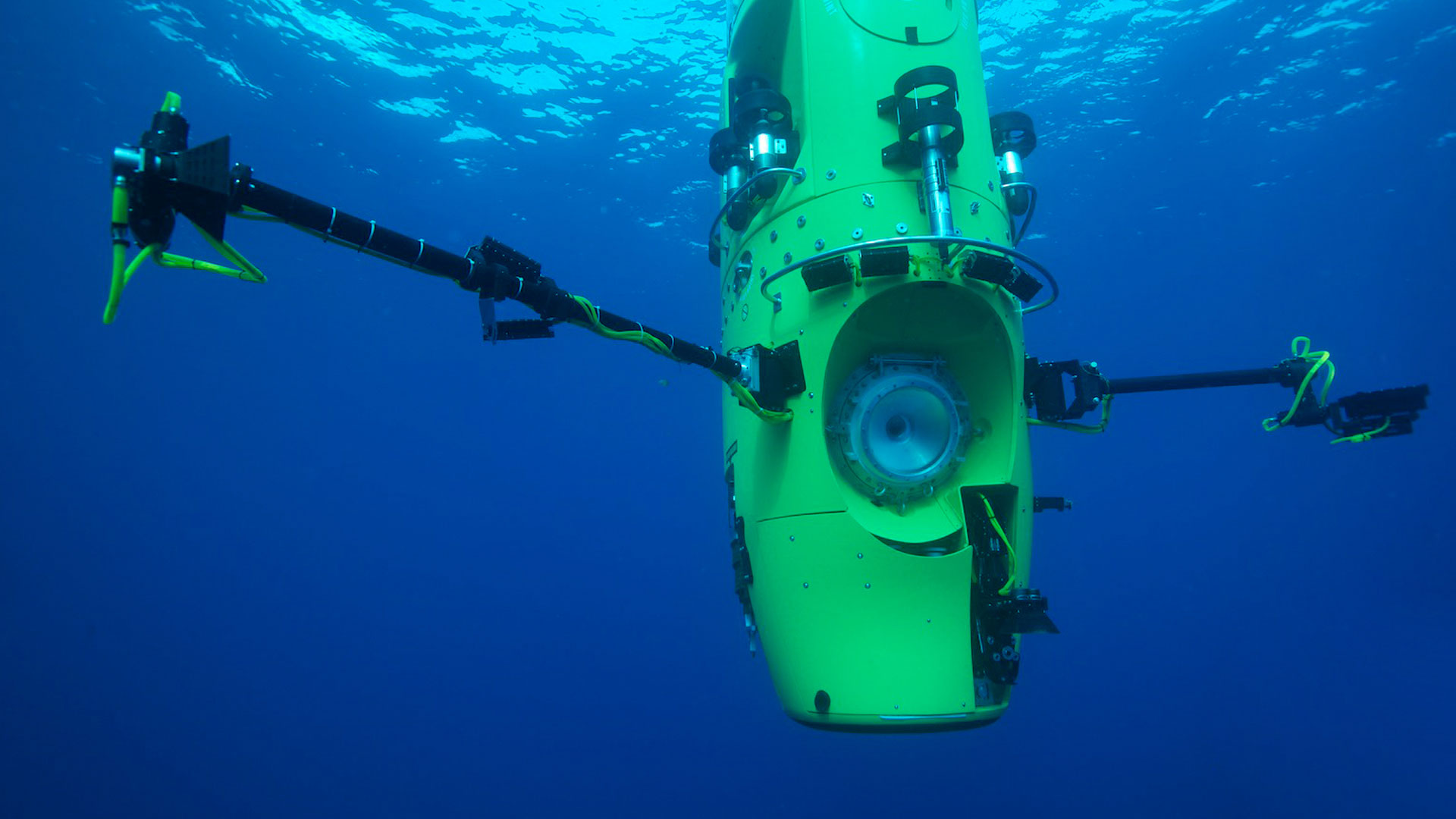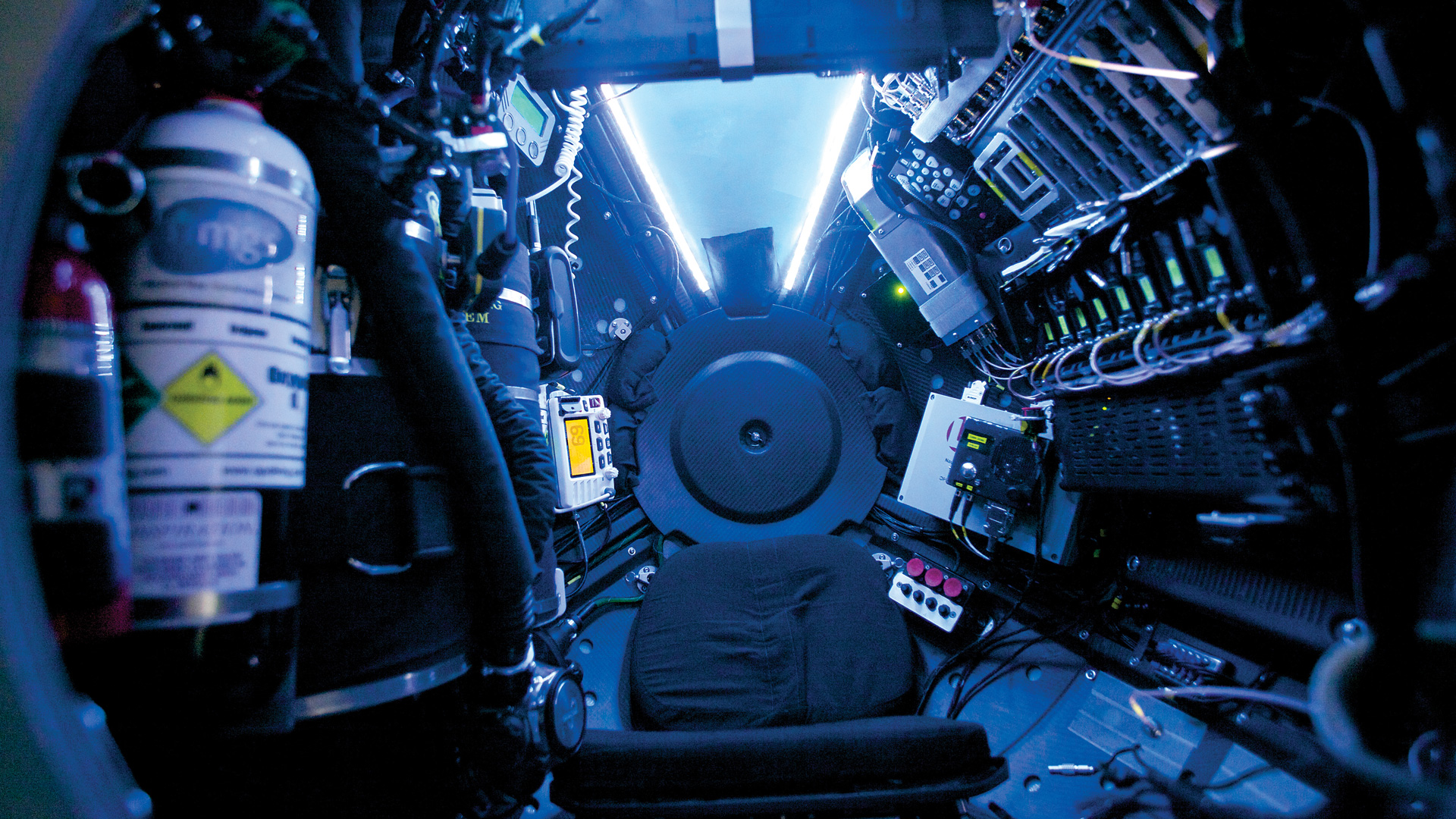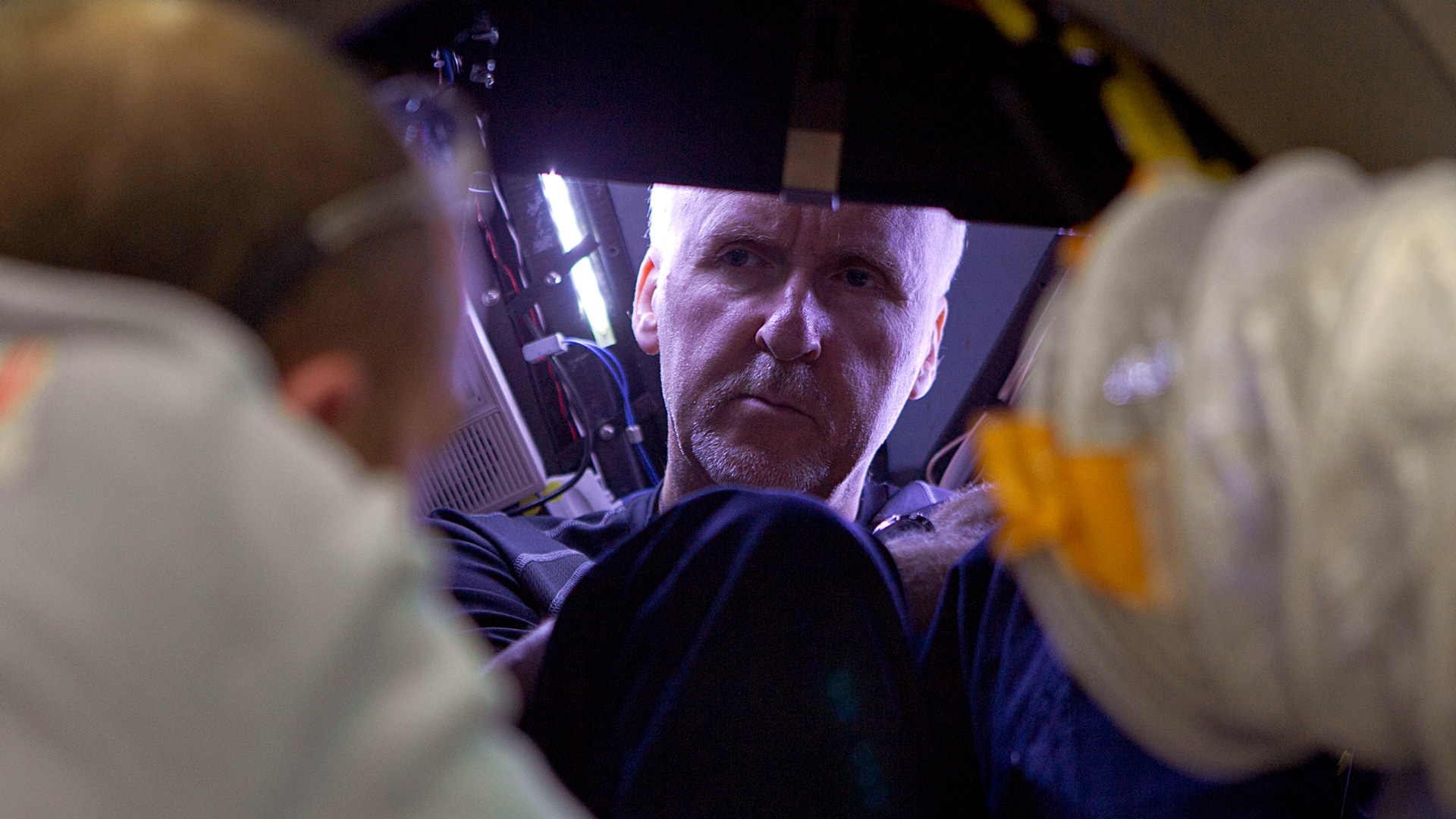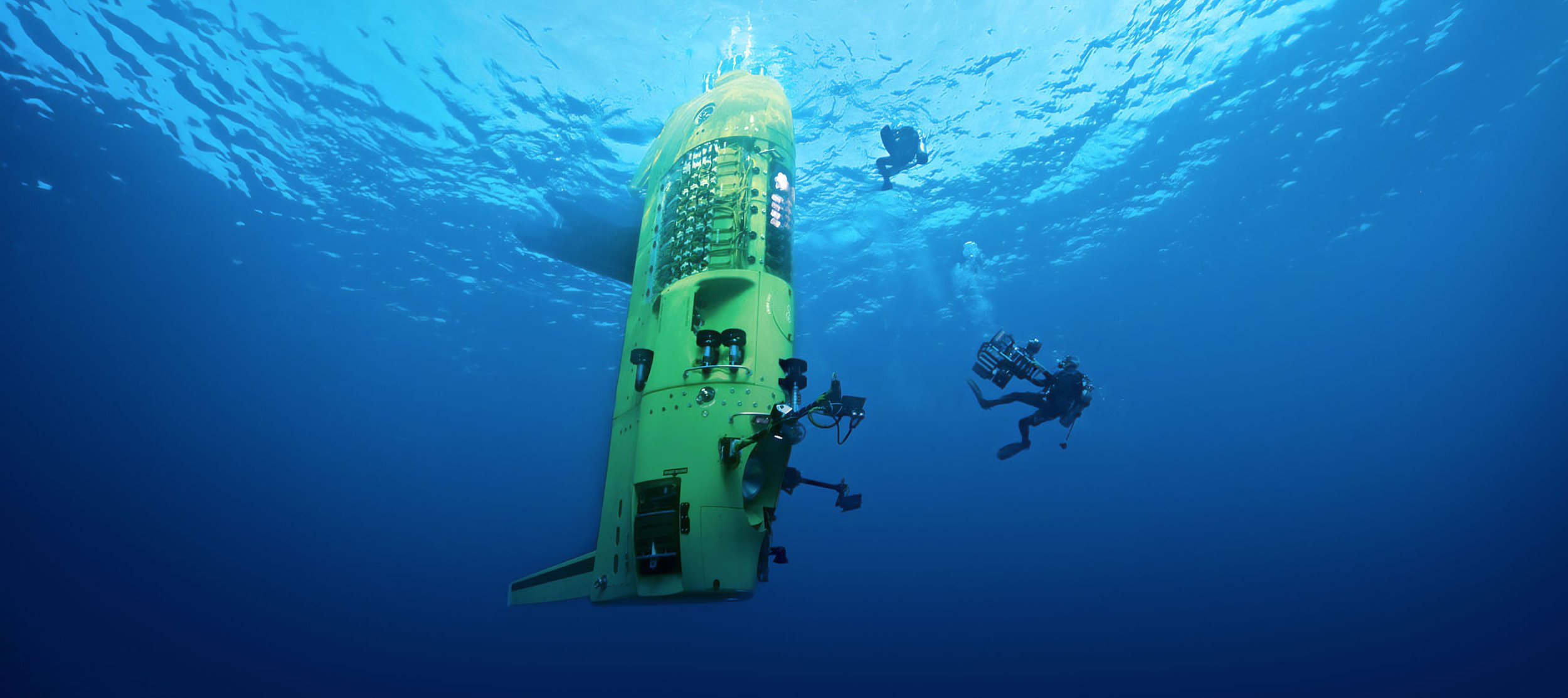Acheron Project
Deepsea Challenger Pilot Sphere
2012
Research, Concept, Development + Production
Deepsea Challenger
How do you keep James Cameron happy for eight hours in a one metre sphere 11,000 metres underwater?
D+I was selected by James Cameron and Ron Allum of the Acheron Project as the preferred Australian industrial design team to develop the cockpit layout for the Deepsea Challenger's record dive to the bottom of the Mariana Trench. At 10,924 metres deep, the Mariana Trench is the deepest point in the world’s oceans (deeper than Mount Everest is high). With such tremendous depths and extreme pressure involved, the success of the project hinged on our ability to minimise risk and keep the pilot safe and able to drive the sub.

Crushing Depths + Critical Systems
We started our discovery by listening to the pilots and uncovering every process and anticipated need required for the record dive. We questioned the specialist engineers at Acheron to be clear on the risks involved with such an extreme dive. There were many complex variables and constraints to work with — a fire means the pilot can't breathe or see, too much weight would compromise the sub's finely-tuned buoyancy, any moisture build-up could cause critical systems to fail, and excessive fatigue or discomfort would affect the pilot's ability to control the dive.

Pilot Sphere + Life Support Systems
The Pilot Sphere and Life Support Systems were critical to the project, providing the pilot with operational controls, oxygen, warmth, and protection from the immense pressure at depth. With a 1.1-metre diameter, it was the minimum size necessary to accommodate the pilot and the sub controls. The Sphere maintained a constant sea-level pressure of 1 atmosphere inside while withstanding the 16,500 psi pressure outside. Dual oxygen supply and carbon dioxide removal systems ensured safety, with redundancy features such as a full-face mask in case of a fire. The design brief required the integration of 140 complex operating systems inside a 43” diameter sphere – a space equivalent to an average-sized fridge. The internal layout had to be meticulously developed for safety and functionality. The Shell inside the Sphere supported the pilot seating, life-support equipment, and control assemblies. It featured sprung mechanisms designed to compress with the Sphere while maintaining structural integrity. This design also protected the pilot and electrical equipment from condensation, guiding moisture to a safe storage area.

A world first.
Hours were spent with James Cameron and the Acheron team moving foam models of hardware around the simulator, updating seat designs, throwing ideas out, and trying innovative new ones. These mock-up sessions were invaluable; they allowed us to follow the pilot through the dive — we focused on ergonomics, hatch entry/exit techniques, how to launch the sub with the pilot on their back, and then change their orientation during the descent, what activities they would run through during the dive, and how they would ascend. We took hours of video and thousands of photos, constantly reworking our ideas until a viable design solution began to emerge. The project proved to be one of the most significant undertakings in D+I's 30+ years in business. Deepsea Challenger took out the 2012 Good Design Award of the Year — demonstrating our ability to work at the very highest level and overcome extreme engineering challenges.

